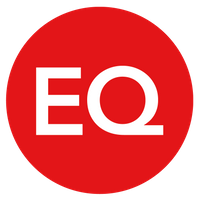Ways technology is helping employers target reward and benefits communications better
Microsoft Teams, Zoom, WhatsApp… technology has dramatically changed the way the business community communicates over the last few years.
So it should be no surprise that the right technology is also integral to the development and delivery of an effective reward and benefits strategy.
From around-the-clock mental health and financial wellbeing support to dynamic total reward statements showing the real-time value of each employee’s reward package, many of today’s most popular employee benefits are only possible with the required technology in place.
That’s one of the reasons so many companies have increased the proportion of their HR budget allocated to technology in recent years.
Benefit delivery is not the only area in which investment in technology is an increasingly important part of organisations’ reward strategies, though. Enhanced data collection and analysis capabilities are also increasingly allowing employers to target their benefits communications, maximising their impact.
But just how is technology helping companies to use targeting to boost benefit communication engagement levels in 2022?
The importance of targeting reward and benefits communications
As individuals, we all have different interests, aims, worries, and desires. And as employees, we also each have a unique set of reward and benefits needs; there’s no one-size-fits-all solution.
In a world where we’re inundated with emails, messages, and invitations every day, blanket reward and benefits communications are therefore only sporadically effective at best.
Either you bombard colleagues with communications on everything and anything, to the point that recipients switch off and stop engaging altogether, or you send out general messages that fail to properly resonate with anyone.
That’s why even low-level targeting, such as dividing the workforce by age group, is likely to improve communication engagement levels.
But it’s only when you start to really drill down into the varying characteristics of your workforce and use that information to develop strategic communications that your results should really start to change.
How technology helps
When it comes to benefits communications, the key to targeting is collecting enough data on your employees as well as being able to split the workforce by a range of characteristics, such as family situations and outside interests. Modern technology makes gathering and evaluating data at this level quick and easy.
On top of improving your understanding of what people want and need to know about, it enables an ability to send out of complex communications triggered by both multiple data elements and user behaviours. With the right data analytics at your fingertips, there is the ability to discover the key drivers of success in a reward and benefits strategy.
Other ways the right technology can improve the targeting of benefits communications include:
• Enabling analysis on four different levels: descriptive (or what happened), diagnostic (why it happened), predictive (what might happen), and prescriptive (what you want to happen).
• Pinpointing the right channels and media in which to connect with different individuals. This is particularly important if you are serving a multigenerational or geographically diversified workforce. Technology can help you work out which employees will respond best to a video on social media or your organisational app, and which employees are more likely to engage with a text or email.
• Allowing you to view your benefits communications through a behavioural science lens so you can understand, for example, how cognitively easy an email or article is to understand, absorb and act upon – and so how likely it is to achieve the desired result.
In simple terms, by investing in and using the right technology to target your benefits communications allows less time to be spent on planning and organising communications strategies and more time focusing on the content of those communications to ensure it actually engages with the employee audience. And that has to be a good thing.
Supplied by REBA Associate Member, Equiniti
Hi we are EQ; some may know us as Equiniti! We provide specialist reward, benefits and payroll solutions.








